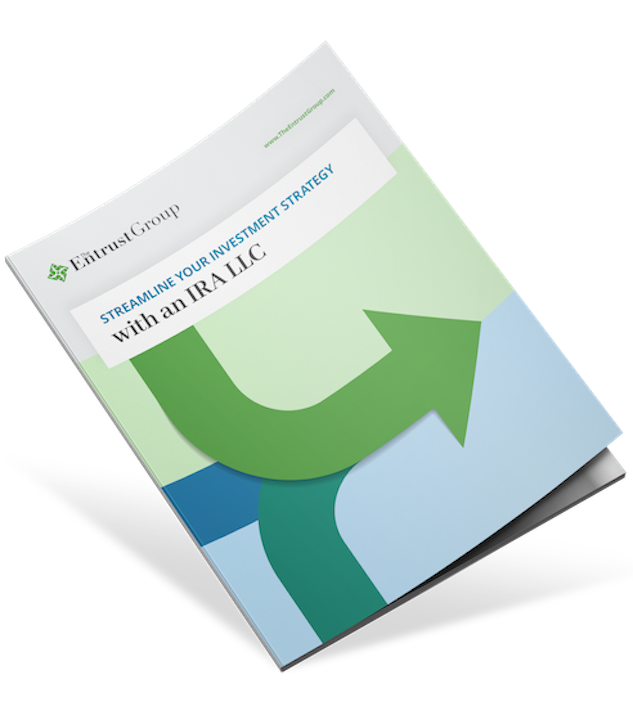Asset Protection Strategies for SDIRA Holders: Webinar Wrap

Estimated reading time: 4 minutes
“Asset protection is akin to wearing a seatbelt. In the moment of an accident, you cannot go flying toward the windshield and then try to turn around and install an airbag.”
In our September webinar, we heard from Jay Butler, Managing Director of Asset Protection Services of America. With 19 years of experience in the industry and a wealth of knowledge about limited liability company (LLC) formation, Jay discussed asset protection strategies for self-directed IRA (SDIRA) holders.
In this article, we're bringing you the key takeaways from Jay’s presentation. This includes insights on who might benefit from a self-directed IRA LLC, the advantages of charging order protections, and factors to consider in choosing a state for your LLC.
Want more in-depth information on a specific section of the article? Just click on the section heading to jump right to that portion of Jay’s webinar.
Additionally, we’ve included a supplementary video interview with Jay. In the video, Jay guides the viewer through a step-by-step process of establishing an IRA LLC and touches on some common misconceptions about these powerful investment vehicles.
The Importance of Asset Protection for SDIRA Holders
If privacy and asset protection are core to your investing strategy, then you may want to consider looking into an SDIRA LLC.
Unlike 401(k)s, IRAs are not protected under the Employee Retirement Income Security Act (ERISA). In the case of litigation, SDIRA holders file Form 5498. This discloses the total valuation of the account, potentially making it accessible to the plaintiff during legal proceedings. This lack of protection underscores the necessity for proactive asset protection strategies.
One of the key strategies Jay discussed is the use of LLCs for SDIRA investments. By placing your investments into an LLC, you create an additional layer of security. This is achieved by the
“limited liability” structure of an LLC and a protective legal mechanism known as a charging order.
What is a Charging Order Against an LLC?
A charging order is a legal tool employed by creditors to collect debts from a debtor who holds an ownership stake in an LLC. When a creditor secures a charging order against an LLC member with substantial outstanding debts, they gain specific rights, typically related to LLC profit distributions. Essentially, the creditor can become entitled to any profits or income due to the member from the LLC.
Jay explains that charging orders primarily serve as a protective shield for the interests and assets of other investors within an LLC. In multi-member LLCs, this protection is crucial. By preventing a creditor from gaining control or forcing the liquidation of LLC assets, charging order protection safeguards the financial well-being of innocent co-owners. It ensures that the LLC's operations continue uninterrupted, preserving the financial stability of all members and investors.
But what about single-member LLCs? Do they enjoy charging order protection? The answer depends on the state and the LLC's structure, as determined by the legal precedent set in a Colorado bankruptcy court case, People vs. Albright.
Protections For Single-Member LLCs May Depend on the State
In this court case, the judge concluded that charging order limitations were essentially superfluous in single-member LLCs. Why? Because in single-member LLCs, there are no other party interests to protect.
Currently, 47 out of the 50 states do not provide charging order protections for single-member LLCs.
Note: As a self-directed IRA administrator, The Entrust Group does not provide financial or legal advice. The information provided here is for educational purposes only. Before making any financial or investment decisions, it is advisable to consult with a trusted financial, tax, or legal professional who can provide guidance tailored to your specific situation.
The Difference Between Inside and Outside Lawsuits
During his presentation, Jay introduced the concept of inside and outside lawsuits, a critical aspect of asset protection.
Inside lawsuits are legal disputes that originate within the entity itself. These often involve conflicts or disagreements among members or partners of the LLC. For instance, if you have multiple investors in your LLC, an inside lawsuit might arise due to differences in opinion on how the business should be managed or how profits should be distributed.
In contrast, outside lawsuits arise when the LLC is sued due to an incident unrelated to its core business activities. Suppose your LLC primarily invests in real estate, and one of your personal vehicles, not associated with the business, is involved in a car accident, resulting in a lawsuit. This is considered an outside lawsuit.
Charging Order Protections Do Not Apply in Inside Lawsuits
Jay further explains that charging order protection does not apply to inside lawsuits. This means that the assets within the LLC are vulnerable in such cases. Charging order protection typically does apply in outside lawsuits, providing a shield to protect your business assets from being seized to settle personal liabilities.
His solution to mitigate the risks associated with inside and outside lawsuits? Compartmentalization.
Instead of pooling multiple properties or assets within a single LLC, SDIRA holders may consider creating separate, individual LLCs for each asset. Each LLC acts as a distinct legal entity with its own set of assets and operations.
For example, if you have three investment properties, instead of housing them all in a single LLC, you could establish three separate LLCs, each dedicated to a specific property. This practice isolates the assets, which can help to ensure that a legal issue related to one property won't jeopardize the assets in the other LLCs.
Compartmentalization may reduce the risk of asset exposure and safeguard your investments. Even if a lawsuit arises concerning one property, it won't impact your other assets housed in different LLCs.
Explore Asset Protection Strategies for Your SDIRA
By understanding charging order protections and the key distinctions between inside and outside lawsuits, SDIRA holders can make informed decisions for their portfolios. The use of an LLC may be a valuable tool in this endeavor, helping to shield assets from potential legal liabilities.
Remember, when it comes to asset protection, knowledge, and strategic planning are your most important allies. It's crucial to consult with experts and consider your specific investment goals when structuring your SDIRA investments within an LLC.
For more content like this, be sure to sign up for our newsletter. We’ll send you the latest trends in self-directed investing with comprehensive blog posts, guides, and videos.
Plus, we’ll keep you up-to-date on each new monthly webinar as it approaches. Every month, we invite an industry expert to cover in-depth topics like Real Estate Investing Lessons from Past Recessions, Investing in Startups Before the Public, and Cryptocurrency Investing.









/Blog_Image_401k-executive-order_1000x500.jpeg?width=250&name=Blog_Image_401k-executive-order_1000x500.jpeg)





















0 Comment